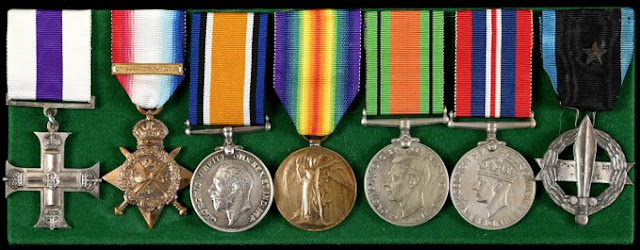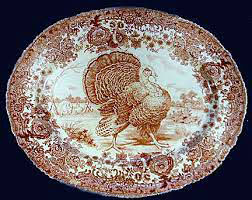 QUESTION: Recently, I purchased an interesting medal and ribbon at an antique show that the dealer told me was from the late 19th century. The medal, made of what seems to be white metal, hangs from a fairly well worn red, white, and blue silk ribbon and says G.A.R. 24th Encampment, Boston, Massachusetts, 1890. Can you tell me anything about this? What was the G.A.R.?
QUESTION: Recently, I purchased an interesting medal and ribbon at an antique show that the dealer told me was from the late 19th century. The medal, made of what seems to be white metal, hangs from a fairly well worn red, white, and blue silk ribbon and says G.A.R. 24th Encampment, Boston, Massachusetts, 1890. Can you tell me anything about this? What was the G.A.R.?
ANSWER: You have a Grand Army of the Republic (GAR) Badge from one of the organization’s annual conventions, known as encampments. These encampments took place in different cities beginning in 1866 and ending in 1949. The First National Encampment convened in Indianapolis, Indiana, on November 20, 1866 while the last or 83rd National Encampment took place in Indianapolis, Indiana on August 28, 1949. Sixteen members attended.
Dr. B.F. Stephenson founded the GAR in 1866 in Decatur, Illinois, to advocate and care for Union Civil War veterans, widows and orphans. Brothers, fathers and sons had marched off from towns and cities in July 1861, proud, excited, and dedicated—most without a clue as to what they were getting themselves into. Over one million of them died—more than in all the other wars the U.S. engaged in up to that time. And those who did return were often maimed for life.

 The GAR was a fraternal organization composed of veterans of the Union Army, US Navy, Marines and Revenue Cutter Service who served in the Civil War. Linking men through their experience of the war, the GAR became one of the first organized advocacy groups in American politics, supporting voting rights for black veterans, lobbying the US Congress to establish veterans' pensions, and supporting Republican political candidates. It dissolved in 1956 when its last member died.
The GAR was a fraternal organization composed of veterans of the Union Army, US Navy, Marines and Revenue Cutter Service who served in the Civil War. Linking men through their experience of the war, the GAR became one of the first organized advocacy groups in American politics, supporting voting rights for black veterans, lobbying the US Congress to establish veterans' pensions, and supporting Republican political candidates. It dissolved in 1956 when its last member died.
Veterans had developed a unique bond during the Civil War that they wished to maintain, a trusting companionship and a sentimental connection they kept by joining veterans' organizations. At the end of the Civil War the individual was inconsequential, and the U.S. Congress needed some prodding to enact legislation to take care of veterans. These veterans' groups were instrumental in getting appropriate legislation passed.

 Though many veterans groups organized after the Civil War, the GAR became the most powerful. By 1890, it had 490,000 active members. Five U.S. presidents came from its ranks as well as many senators and representatives. At one time, no doubt due to the political pressure of GAR constituents, one-fifth of the national budget went to soldiers pensions. The GAR founded soldiers' homes for the permanently disabled and was active in relief work.
Though many veterans groups organized after the Civil War, the GAR became the most powerful. By 1890, it had 490,000 active members. Five U.S. presidents came from its ranks as well as many senators and representatives. At one time, no doubt due to the political pressure of GAR constituents, one-fifth of the national budget went to soldiers pensions. The GAR founded soldiers' homes for the permanently disabled and was active in relief work.
According to chroniclers of the 24th National Encampment in Boston, in 1890—from which this badge originated—the GAR had, by then, established orphans homes in seven states, preserved Gettysburg as a national battleground and given more than $2 million in charity to veterans and their families whether or not they were members of the GAR. For a time, it was impossible to be nominated on the Republican ticket without the endorsement of the GAR.
Civil War veterans controlled a lot in this country and had a strong political voice. Among other things, they used their political influence to see that Congress adopted May 30 as Memorial Day.
 To honor the deceased, veterans would decorate graves of their fallen comrades with flowers, flags and wreaths, so people referred to it as Decoration Day. Although Memorial Day became its official title in the 1880s, the holiday didn’t legally become Memorial Day until 1967. In 1977, Congress moved Memorial Day to the last Monday of May to conform with the Uniform Monday Holiday Act. In December 2000, Congress passed a law requiring Americans to pause at 3 P.M. local time on Memorial Day to remember and honor the fallen.
To honor the deceased, veterans would decorate graves of their fallen comrades with flowers, flags and wreaths, so people referred to it as Decoration Day. Although Memorial Day became its official title in the 1880s, the holiday didn’t legally become Memorial Day until 1967. In 1977, Congress moved Memorial Day to the last Monday of May to conform with the Uniform Monday Holiday Act. In December 2000, Congress passed a law requiring Americans to pause at 3 P.M. local time on Memorial Day to remember and honor the fallen.
The tradition of having picnics on Memorial Day actually began on May 1, 1865 in Charleston, South Carolina. The Confederates had used the horseracing course there as a Union prisoner-of-war prison. When the war ended and the Confederates evacuated the grounds, a large group of former slaves re-interred the Union soldiers’ bodies who had died there and erected a white fence with a large arched gate, above which they mounted a sign, “Martyrs of the Racecourse.” When they finished, they broke up and moved to the infield to hold picnics. And thus began this national tradition.

 Delegate badges from the GAR’s National Encampments have long been a collectible. First created after the 1883 encampment in Denver, Colorado, and handed out annually until the last Encampment in 1949 in Indianapolis—except in 1884 when there wasn’t any badge—these “ribbons of honor” were created and furnished by the city that hosted the event. They reflected the city itself, including local history and state symbols as well as an image of the current Commander-in-chief.
Delegate badges from the GAR’s National Encampments have long been a collectible. First created after the 1883 encampment in Denver, Colorado, and handed out annually until the last Encampment in 1949 in Indianapolis—except in 1884 when there wasn’t any badge—these “ribbons of honor” were created and furnished by the city that hosted the event. They reflected the city itself, including local history and state symbols as well as an image of the current Commander-in-chief.
Badges came in several varieties. There were the official ones, commissioned by the host city and given to all delegates, past delegates and members of allied organizations, such as the Sons of Union Veterans of the Civil War, the Women's Relief Corps and the Ladies of the Grand Army of the Republic, as well as later, the Daughters of Union Veterans, and there were the semiofficial staff badges and souvenir badges. There were also testimonial badges, given to past Post officers at the end of their service period. These had horizontal rank straps with one or more stars on them and were often made of 14 or 18K gold and studded with diamonds.

 In addition to the National Encampment badges, there were two-sided Post badges, with one side red, white and blue and the other in black with the words "In Memoriam," to be used when a member died. There were other unique Post badges as well, including those with a detachable metal top piece from which hung a large metal star or disk. And since Posts ordered new ones every few years, there are many variations in badges from each Post. Veterans wore Post badges to funerals, Memorial Day programs, and Fourth of July parades, among other events.
In addition to the National Encampment badges, there were two-sided Post badges, with one side red, white and blue and the other in black with the words "In Memoriam," to be used when a member died. There were other unique Post badges as well, including those with a detachable metal top piece from which hung a large metal star or disk. And since Posts ordered new ones every few years, there are many variations in badges from each Post. Veterans wore Post badges to funerals, Memorial Day programs, and Fourth of July parades, among other events.
Some collectors specialize just in Department or state badges. Each state incorporated its flower, animal, or symbol into its badge design. So the Massachusetts badge featured a pot of beans, New Hampshire had a piece of granite on it, and Ohio badges had a picture of a buckeye. Each Department also had special delegate badges arid ribbons. The colors of ribbons, usually made from silk, varied, also. Department badges had red ribbons, Post badges had blue ribbons; and National badges always had a yellow/buff ribbon.
The Stevens Company of England produced the finest GAR ribbon badges, often referred to as Stevensgraphs. These portrait silks have extremely fine detail. Other companies, such as the B.B. Tilt Co.,. the United States Badge Co. and the Son of Paterson (N.J.) all made badges, but these aren’t as easily identified or as finely made.

To read more articles on antiques, please visit the Antiques Articles section of my Web site. And to stay up to the minute on antiques and collectibles, please join the over 30,000 readers by following my free online magazine, #TheAntiquesAlmanac. Learn more about "Lady Luck" in the 2024 Fall Edition, online now. And to read daily posts about unique objects from the past and their histories, like the #Antiques and More Collection on Facebook.










































